Recent Articles
Popular Makes
Body Types
2021 Audi Q7 vs. 2021 Lincoln Aviator
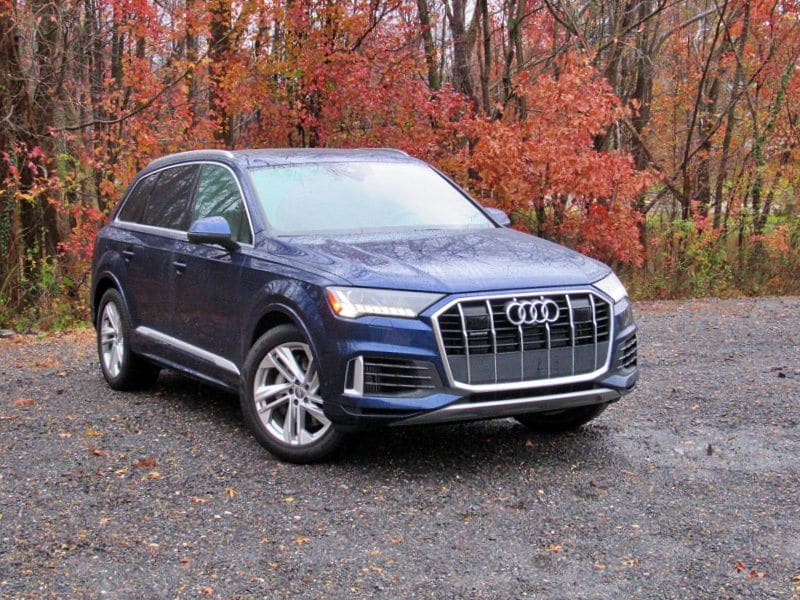
2020 Audi Q7 ・ Photo by Brady Holt
Until recently, few would consider a Lincoln as valid competition for an Audi. Audi is one of the top luxury brands in the world, a master of superlative driving dynamics, meticulous interior quality, and cutting-edge technology.
The 2021 Lincoln Aviator mid-size luxury crossover demands to be taken seriously. Unlike past Lincoln crossovers, it boasts distinctive styling inside and out, a rear-wheel-drive platform, a standard 400-horsepower engine, and various clever, unique design touches. It’s roomier, more powerful, and less expensive than the competing Audi Q7. Keep reading for more details about how these two luxury SUVs compare, and which one is our top pick overall.
Pricing and Features
The 2021 Lincoln Aviator starts at $50,190 compared with $54,950 for the 2021 Audi Q7. The Lincoln’s price advantage is magnified if you want a powerful engine: The Audi’s standard engine is a 248-horsepower four-cylinder, while a 335-horsepower V6 is a $6,000 upcharge. The Aviator has a 400-hp V6 as standard equipment.
Audi does provide some additional features as standard equipment that cost extra on the Lincoln: all-wheel drive, genuine leather upholstery (instead of synthetic leatherette), a navigation system, and a panoramic sunroof. And loading up both models can result in sky-high prices. Our V6-powered Q7 test vehicle, at $74,290, was actually less money than the Aviator we tested ($76,310). Still, Lincoln lets you get a powerful and pretty well-equipped luxury suv for less money than the base Q7.
Lincoln Aviator
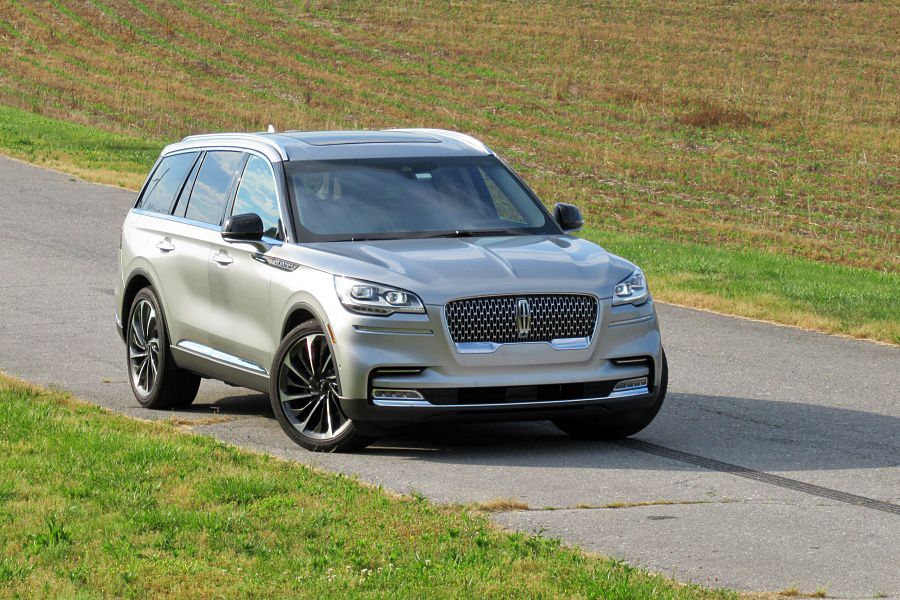
Photo by Brady Holt
Exterior Design
The current-generation Audi Q7 debuted as a 2017 model with all straight, clean lines and big windows — classy and unexuberant, almost to a fault. A mid-cycle update last year softened the Q7 around the edges, adding some curves to its headlights, grille, and taillights. But if anything, backtracking a bit from old stoic angularity makes the design even more conservative.
In contrast, the Lincoln Aviator is bolder. It doesn’t set out to look like a performance machine, but it doesn’t settle into the background. Lincoln took some design risks with the high, curved headlights astride a squared-off mesh grille, and its long, slim taillights connected by a lightbar across the vehicle’s rear. It’s distinctive without being garish, and even if you don’t love how all the details come together, it’s hard to argue that the result is dull or generic. Interestingly, the Aviator looks both lower and longer than the Q7, yet it’s neither — they’re both big for their class at an identical 199.3 inches long, while the Lincoln is 1.1 inches taller. We’ll let you choose your aesthetic winner between these two SUVs.
Tie
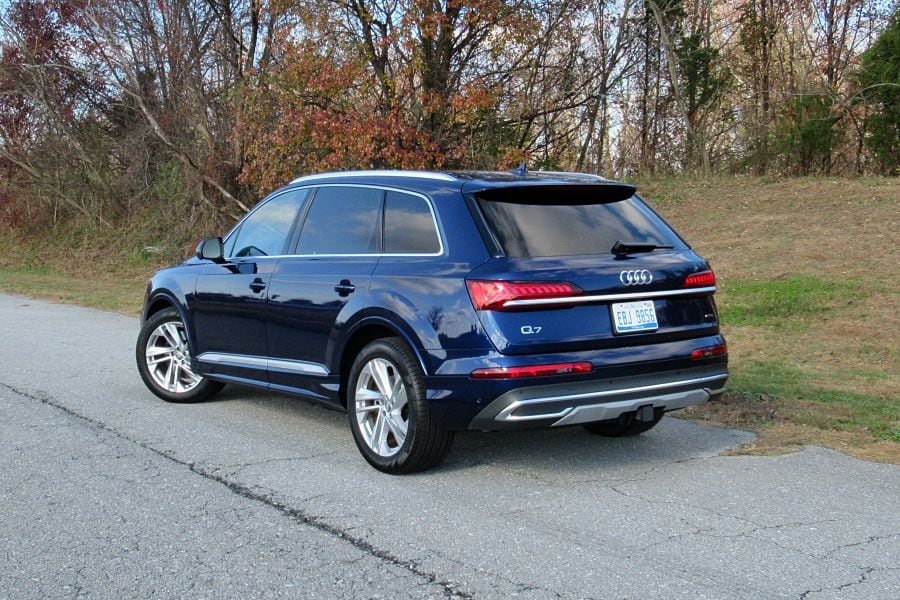
Photo by Brady Holt
Interior Design
Inside, the Q7 and Aviator have a different aesthetic as well. The Lincoln provides a modern-day interpretation of old-school Detroit luxury — a horizontally stretched dashboard with lots of rounded-off rectangles, but with high-quality materials and a big 10.1-inch infotainment touchscreen. “It looks American,” said one passenger, not as a compliment. But for some, it’s a welcome homage to past Detroit glory that also includes contemporary technology.
The Q7, meanwhile, has a clean, high-tech vibe, along with one of the highest-quality interiors available. Last year’s update brought an advanced new infotainment system that dominates the dashboard; a 10.1-inch touchscreen that sits above a second 8.6-inch screen and next to a 12.3-inch digital gauge cluster. The latter (what Audi calls Virtual Cockpit) is the industry’s best, with many customizable views, crisp resolution, and fast responses. The rest of the controls are a mixed bag — it all looks great, and the touchscreens provide haptic feedback when you successfully push a digitally rendered button. But the Aviator’s physical buttons and knobs are easier to operate without distraction. Still, the Audi’s superlative materials, build quality, and Virtual Cockpit earn it the win.
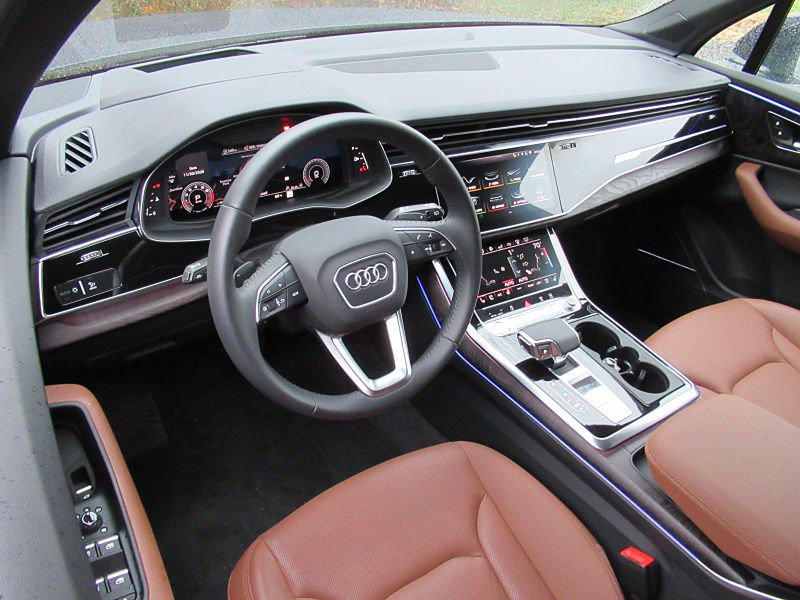
Photo by Brady Holt
Interior Comfort
The Q7 is a comfortable, spacious luxury suv — for up to five people, anyway. Drivers and passengers alike enjoy excellent visibility, and the second-row seat is supportive and generously spacious — if you slide it all the way back.
But if you want to seat seven, the Q7’s third row isn’t as spacious or as easy to access as the Aviator’s. Neither vehicle has adult-friendly third-row seating, but the Lincoln is a little more accommodating. It’s also available with second-row captain’s chairs, while the Q7 comes only with a bench seat. What’s more, Lincoln’s available 30-way “perfect position” front seats offer incredible customization; with enough patience, anyone can reshape the Aviator’s front seats into the perfect thrones. The Q7 is comfortable, too, but the Aviator goes further.
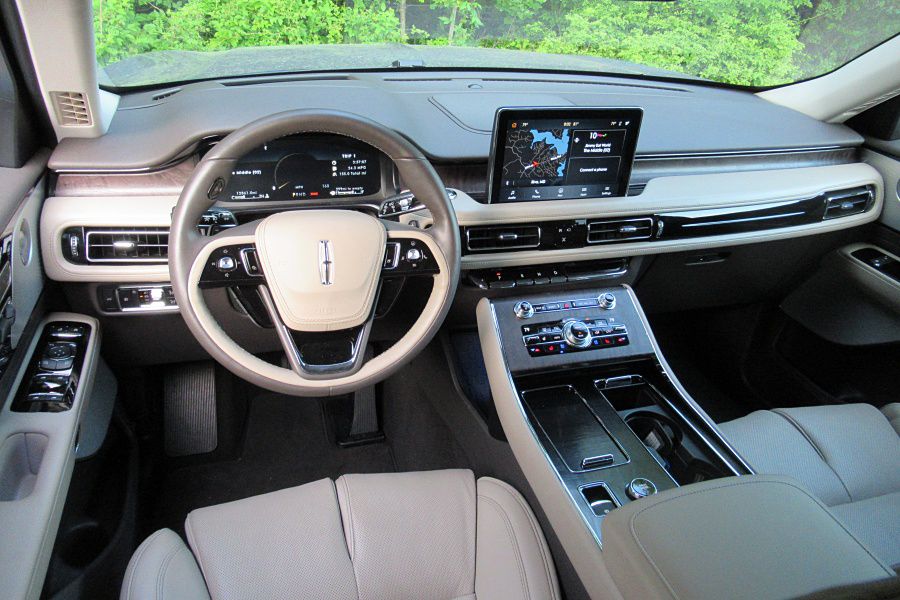
Photo by Brady Holt
Cargo and Towing
The Aviator’s advantages with cargo exceed its slightly superior third-row seating. The Lincoln fits a commendable 18.3 cubic feet of cargo behind its third row, 41.8 cubic feet with the third row folded, and 77.7 cubic feet once the second-row seat is folded down as well.
The Q7, while not cramped, is less generous. There’s 14.2 cubic feet of space behind its third row, 35.7 cubic feet behind its second row, and 69.6 cubic feet behind its front seats. Also, it’s quicker to fold down the Lincoln’s third row; while both SUVs provide power-folding at the push of a button, Audi makes you hold the button down as the seat lowers itself or rises back. That’s slower and less convenient than just grabbing a handle to do the job manually. The Lincoln’s seat offers one-touch operation. When you need to pull something that doesn’t fit inside the vehicle, the Q7 does have a higher maximum towing capacity than the Aviator: 7,700 pounds versus the Lincoln’s 6,700. On the other hand, that capacity means upgrading to the Q7’s pricey V6 engine; the standard four-cylinder tows 4,400 lbs.
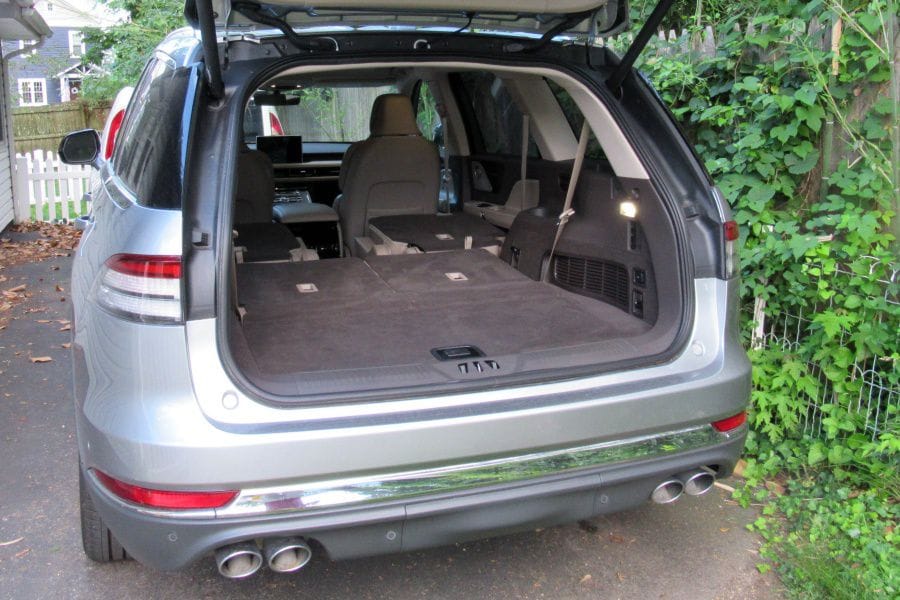
Photo by Brady Holt
Driving Experience
The Q7’s best quality is also where the Aviator impresses the least: ride and handling. That’s not to say that the Aviator drives poorly, though. It’s quiet and relatively agile for a three-row SUV, if not sporty. And its extra-light low-speed steering makes parking a breeze. But the serene vibe you’d expect comes apart when you hit a bump, which the Aviator clomps over with unexpected harshness.
In contrast, the Q7 is consistently taut and supremely composed. It handles like a sports sedan, zesty and lithe. While the Aviator impresses by not feeling bulky and cumbersome, the Q7 goes further and delivers outright fun. And while its ride can also be stiff if you hit a big bump, it recovers more quickly. The Audi doesn’t disguise the road from you, but it rarely feels like the suspension doesn’t have everything under control. What’s more, while the 400-horsepower Aviator has an acceleration advantage on paper, the Q7’s 335-horsepower V6 actually provides even quicker acceleration. The Q7’s base four-cylinder engine is quiet and peppy considering its mere 248 hp, too, though the Lincoln does comfortably outrace it. For more speed, upgrade to the wildly fast, wildly expensive 500-hp Audi SQ7.
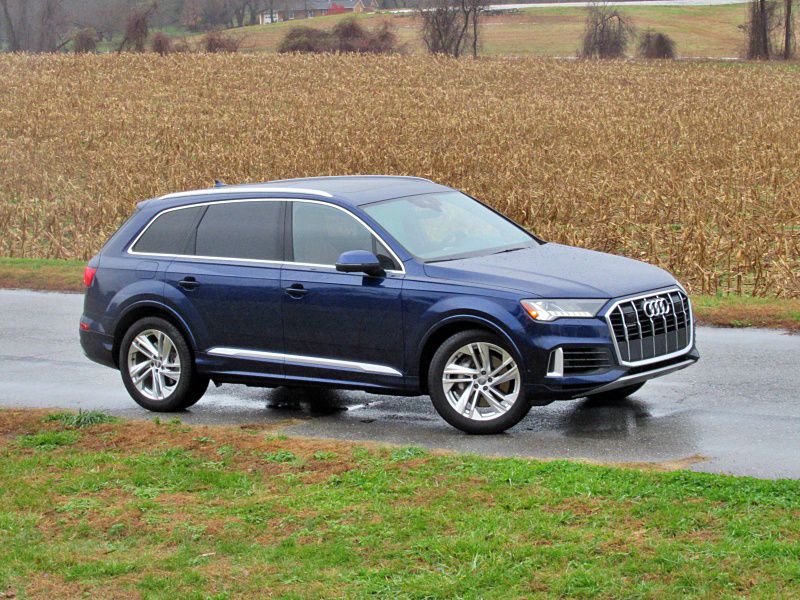
Photo by Brady Holt
Fuel Economy
American SUVs are better known for big horsepower than they’re known for big fuel efficiency. But the Aviator delivers both. The base rear-wheel-drive model achieves EPA ratings of 18 mpg in the city, 26 mpg on the highway, and 21 mpg combined. All-wheel drive drops those figures to 17 mpg city, 24 mpg highway, and 20 mpg combined. Our AWD test vehicle averaged an impressive 23 mpg.
The Q7’s EPA ratings are similar. With standard all-wheel drive, the four-cylinder Q7 achieves 19 mpg city, 23 mpg highway, and 21 mpg combined. The V6 isn’t far behind at 18 mpg city, 23 mpg highway, and 20 mpg combined. However, the Audi requires premium-grade fuel while the Lincoln is content with much-less-expensive regular. Also, in our admittedly non-scientific testing, the V6 Q7 trailed the Aviator and averaged 21 mpg.
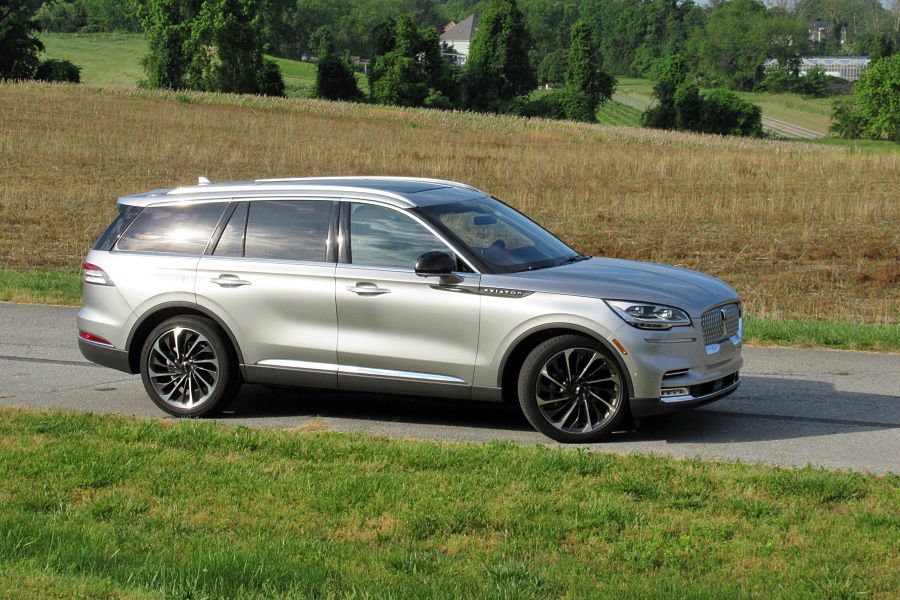
Photo by Brady Holt
Safety
Both the Aviator and the Q7 have lots of advanced safety technology and excellent safety ratings from the National Highway Traffic Safety Administration and Insurance Institute for Highway Safety. Still, the Lincoln is just a little bit better.
While both SUVs earned top IIHS crash-test scores, the organization rated the Q7’s headlights as Poor. The Aviator’s standard headlights scored Marginal, one step above Poor, while optional upgrades push the rating to the highest-available Good. Meanwhile, while the 2021 Q7 hasn’t been fully crash-tested as of this writing, the 2019 model earned a middling four out of five stars for frontal-impact protection; the Aviator got five stars. What’s more, while the two vehicles have similar standard features, the Aviator includes lane-keep assistance on every model while the Q7 does not.
Lincoln Aviator
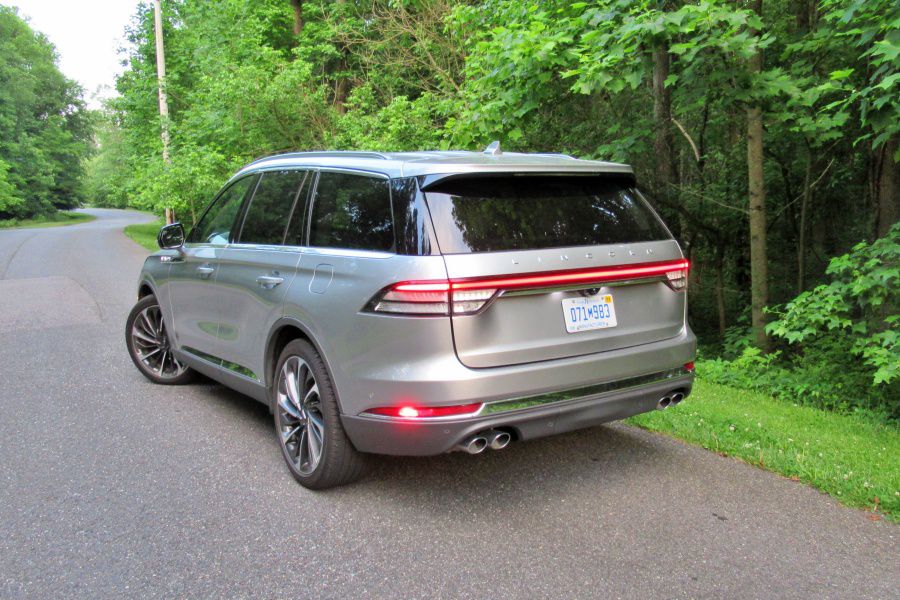
Photo by Brady Holt
Final Thoughts
Let’s be very clear upfront: We love the 2021 Audi Q7. This is a magnificent machine that does nearly everything beautifully. It drives like a dream, and unlike many cars, every piece of the interior feels like it’s worth every penny of its lofty price tag.
But the 2021 Lincoln Aviator is more car for the money, especially if you go easy on the options. True, its driving dynamics and interior quality slip behind the marvelous Q7’s. But the Lincoln avoids being stomped into the ground in either area. It’s a true luxury vehicle, not a mainstream model with extra leather and chrome like some competitors — and some Lincolns. That means its superior power, spaciousness, and value can push it over the top. Some buyers will even prefer the Lincoln anyway for its simpler dashboard controls or its less conservative styling. We wouldn’t argue with anyone who chooses to spend extra for the Audi’s additional polish and poise, as long as they won’t miss the Aviator’s extra spaciousness. But before doing so, check out what Lincoln is offering.
Lincoln Aviator
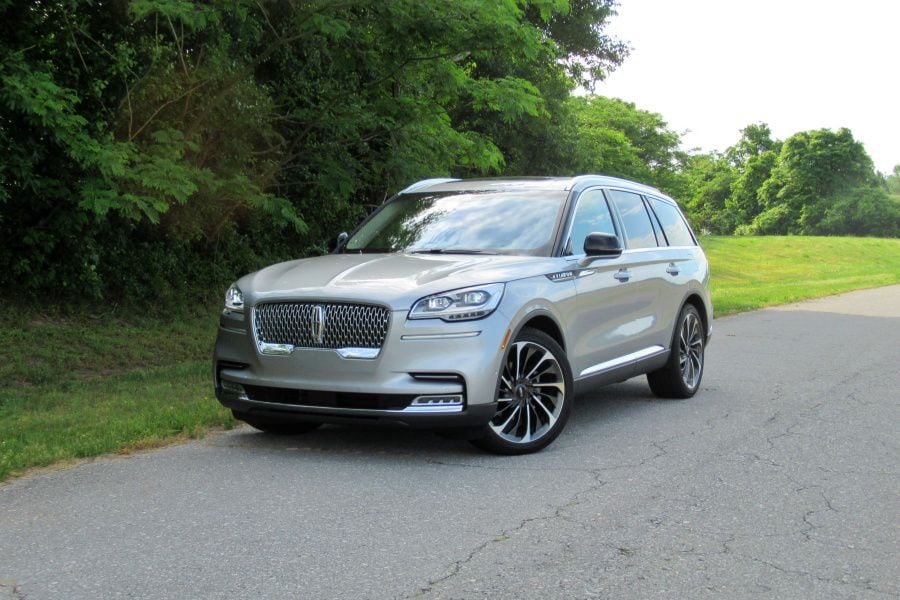
Photo by Brady Holt